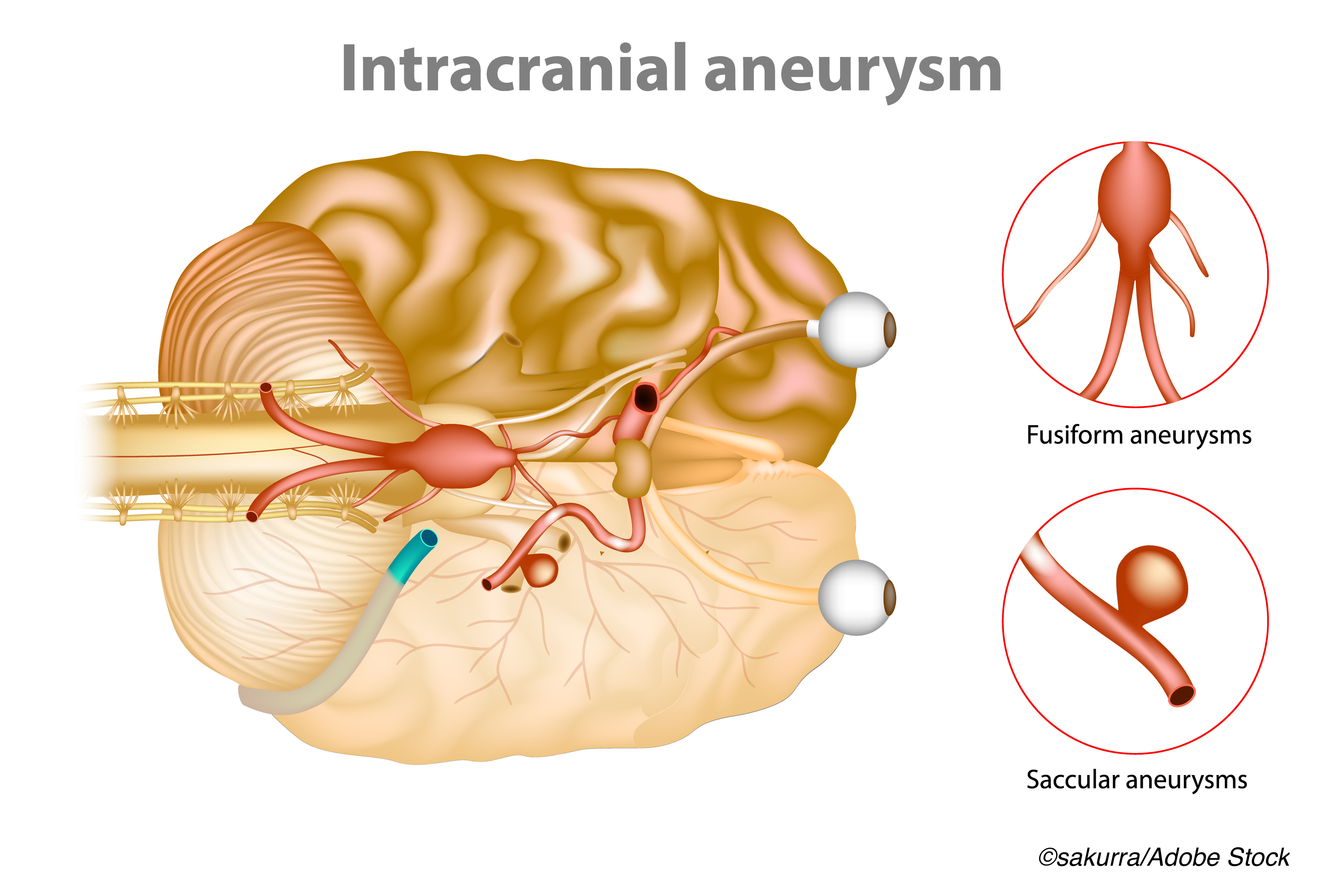Higher genetically predicted serum magnesium concentrations were associated with lower risk of intracranial aneurysm, a Mendelian randomization study found.
For either ruptured or unruptured intracranial aneurysm, the odds ratio (OR) was 0.66 (95% CI 0.49-0.91) per 0.1 mmol/L genetically-predicted increase in serum magnesium concentration, reported Susanna Larsson, PhD, of Karolinska Institute in Stockholm, Sweden, and Dipender Gill, PhD, of University of London, England.
Considered separately, ORs were 0.67 for ruptured subarachnoid hemorrhage (95% CI 0.48-0.92) and 0.57 for unruptured aneurysm (95% CI 0.30-1.06), they wrote in Neurology.
All three associations were non-significant when results were adjusted for genetically predicted blood pressure, suggesting magnesium’s influence was at least partially mediated by hypertension. Roles in multiple physiologic processes contributing to cardiovascular health suggest longer-term effects may also contribute to magnesium’s effects.
Mendelian randomization uses genetic variation to investigate relationships between risk factors and disease. It is less likely to be affected by confounding or reverse causation than conventional observational studies.
In this study, Mendelian randomization provided evidence to support that higher serum magnesium concentrations reduce the risk of intracranial aneurysm and aneurysmal subarachnoid hemorrhage, with systolic blood pressure mediating part of this effect, Larsson and Gill said.
“The associations of genetically predicted serum magnesium with risk of intracranial aneurysm and aneurysmal subarachnoid hemorrhage did not fully attenuate after adjustment for genetically predicted systolic blood pressure, suggesting that magnesium may also affect the risk of these outcomes via other mechanisms,” they wrote.
“In addition to a blood pressure lowering effect, increased magnesium concentrations may reduce the risk of intracranial aneurysm rupture by improving endothelial function and reducing oxidative stress,” they added.
“Overall, this study adds to our understanding of the importance of magnesium in vascular health particularly related to cerebral aneurysms,” observed Joanna Pera, MD, PhD, of Jagiellonian University Medical College in Krakow, Poland, and Christopher Anderson, MD, MMSc, of Brigham and Women’s Hospital in Boston, in an accompanying editorial. “We anticipate a need for both mechanistic and potentially therapeutic investigation into the role that magnesium plays in subarachnoid hemorrhage.”
“The results of this study raise interesting new questions about the links between circulating magnesium, intracranial aneurysms, and blood pressure. Arterial hypertension is a well-recognized risk factor for intracranial aneurysm development and rupture. Magnesium supplementation may lower blood pressure values,” they continued.
“Could this mineral prove useful in developing interventions that could prevent intracranial aneurysm development and/or rupture over and above a simple lowering of blood pressure, perhaps through pleiotropic effects on endothelial function or other mechanisms?” they asked. “With these results in hand, work is clearly needed to learn more about the biology of magnesium in the vascular system and in intracranial aneurysm biology in particular.”
A 2017 meta-analysis found magnesium supplementation significantly reduced blood pressure, with mean reductions of 4.18 mm Hg in systolic and 2.27 mm Hg in diastolic blood pressure. Low serum magnesium has been associated with multiple disorders, and was identified as a predictor for hypertension, cardiovascular disease, including heart failure and arrhythmia, as well as all-cause mortality.
A 2019 study found that both magnesium and calcium were low in patients with acute subarachnoid hemorrhage. A monotonic relationship between low magnesium and subarachnoid hemorrhage severity was described in a 2020 paper.
Another study reported an inverse association between serum magnesium concentration on admission and the extent of hemorrhage in aneurysmal subarachnoid hemorrhage patients. “These observations do not allow us to draw conclusions about any potential causality between hypomagnesemia and intracranial aneurysm rupture, severity, or outcome,” Pera and Anderson noted.
Magnesium supplementation also has been examined as an acute treatment for subarachnoid hemorrhage, though evidence has not supported clinical benefit.
In the present report, Larsson and Gill leveraged randomly allocated genetic variants in a two-sample Mendelian randomization study to assess links between genetically predicted serum magnesium and intracranial aneurysm, then performed multivariable Mendelian randomization analysis to investigate the role blood pressure might play.
They integrated data from three sources: previously identified single-nucleotide polymorphisms associated with serum magnesium in a genome-wide association study in 23,829 individuals of European ancestry, genetic association estimates for intracranial aneurysm from a genome-wide association study in 79,429 people (7,495 cases and 71,934 controls) of European ancestry, and genetic risk estimates for systolic blood pressure from a study of 757,601 European ancestry individuals.
Because data were derived from people of European ancestry, generalizability to other populations is limited, the researchers acknowledged. The genetic variants used to proxy the effect of modifying magnesium reflect small, lifelong effects in serum magnesium concentrations; a clinical intervention may exert a greater change in serum magnesium later in life.
“Caution should be taken when extrapolating findings from Mendelian randomization to infer the effect of a clinical intervention, and clinical trials are warranted to guide optimal practice,” they wrote.
-
Higher genetically-predicted serum magnesium concentrations were associated with lower risk of intracranial aneurysm, a Mendelian randomization study found.
-
Magnesium’s influence was at least partially mediated by systolic blood pressure, further analysis suggested.
Paul Smyth, MD, Contributing Writer, BreakingMED™
This study was supported by the Swedish Research Council for Health, Working Life and Welfare. Gill is supported by the British Heart Foundation Research Centre of Excellence at Imperial College London and a National Institute for Health Research Clinical Lectureship at St. George’s, University of London.
Gill is employed part-time by Novo Nordisk.
Pera reported no disclosures. Anderson reported sponsored research support from the NIH, the American Heart Association, and Bayer AG, and has consulted for ApoPharma and Invitae.
Cat ID: 130
Topic ID: 82,130,730,130,192,925



